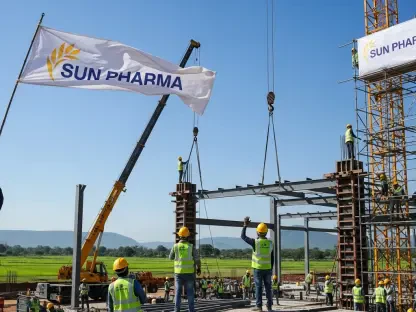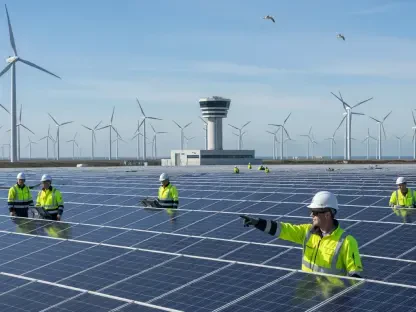In a striking turn of events, the Tokyo-based automaker Honda is wrestling with unprecedented financial and operational challenges that have sent shockwaves through the industry, as U.S. tariffs and a severe chip shortage converge to erode profitability, marking a critical moment for the company. This perfect storm of external pressures has not only slashed net profits by a staggering 37% for the first half of the fiscal year, dropping from 494.6 billion yen ($3.2 billion) to 311.8 billion yen ($2 billion), but has also forced a reevaluation of future earnings. With sales dipping by 1.5% to 10.6 trillion yen ($69 billion) and global vehicle deliveries falling from 1.78 million to 1.68 million units, the magnitude of these disruptions is undeniable. Despite a minor uptick in North American sales, the broader picture reveals a company under siege by macroeconomic policies and supply chain bottlenecks. This situation raises critical questions about how global manufacturers can adapt to such compounding crises.
Navigating Financial Turbulence
Impact of Trade Policies on Earnings
The imposition of U.S. tariffs has dealt a significant blow to Honda’s financial stability, carving out a hefty 164 billion yen ($1.1 billion) from operating profit in the current fiscal year. This policy-driven setback underscores the vulnerability of international automakers to sudden shifts in trade regulations, which can disrupt carefully balanced revenue streams. Beyond the immediate financial hit, these tariffs have compounded existing pressures on pricing strategies, forcing the company to absorb costs that cannot easily be passed on to consumers in competitive markets. The ripple effects are evident in the sharp decline in profitability, as margins are squeezed under the weight of additional expenses. Moreover, the uncertainty surrounding future trade negotiations adds another layer of complexity, making long-term planning a daunting task for executives. As Honda grapples with these challenges, the broader industry watches closely, aware that such policies could reshape market dynamics for other players as well.
Revised Profit Forecasts and Market Implications
In response to mounting financial strain, Honda has drastically revised its profit forecast for the fiscal year ending March 2026, projecting a steep drop to 300 billion yen ($2 billion), a 64% decline from the previous year’s 835.8 billion yen ($5.4 billion). This adjustment, down from an earlier estimate of 420 billion yen ($2.7 billion), reflects the severity of the combined impact of tariffs and supply issues on the company’s bottom line. The downward revision sends a clear signal to investors and stakeholders about the depth of the crisis, potentially affecting stock valuations and market confidence. Dealerships, too, face uncertainty as lower production volumes threaten inventory levels, which could dampen sales momentum in key regions. This forecast adjustment also highlights the broader challenge of maintaining financial resilience in an era of unpredictable external shocks, prompting questions about how Honda can safeguard its market position while navigating these turbulent waters.
Supply Chain Disruptions and Production Halts
Chip Shortage Crisis and Factory Shutdowns
A critical shortage of semiconductors from supplier Nexperia has brought Honda’s production lines to a grinding halt, with significant disruptions reported at multiple facilities. Since late October, operations at the Celaya, Mexico plant have been paused, while North American facilities have faced adjustments, impacting an estimated 110,000 Honda and Acura units. This supply chain bottleneck has turned manageable margin pressures into severe operational challenges, as the inability to secure essential components stalls assembly lines and delays deliveries. The immediate consequence is a strain on inventory, leaving dealers grappling with shortages that could persist for the next 8–10 weeks. Such disruptions expose the fragility of global supply networks in the automotive sector, where a single missing component can derail entire production schedules. Honda’s struggle serves as a stark reminder of the industry’s reliance on a tightly interconnected web of suppliers.
Strategies for Recovery and Dealer Challenges
In the face of these production setbacks, Honda is taking proactive steps to mitigate the impact, with a memo from National Sales indicating efforts to restore full capacity by late November, though no firm timeline has been confirmed. This cautious approach reflects the uncertainty surrounding chip availability and the complexity of ramping up operations after prolonged halts. Meanwhile, dealers are bracing for inventory gaps that could slow replenishment cycles and disrupt sales strategies, particularly in North America where demand remains relatively strong. The broader implications of these delays extend to customer satisfaction, as longer wait times for vehicles may drive potential buyers to competitors. Honda’s focus now lies in balancing short-term recovery with long-term supply chain resilience, potentially exploring alternative suppliers or investing in localized production to reduce dependency on global networks. As these efforts unfold, the industry watches for signs of stabilization in a landscape marked by persistent volatility.









